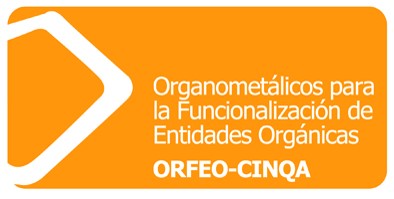Group
Our research group in the Department of Chemistry of the Universitat Autònoma de Barcelona is led by two Full Professors (Prof. Adelina Vallribera and Prof. Roser Pleixats) and two Associate Professors (Dr. Carolina Gimbert and Dr. Albert Granados).
The group’s scientific interests are framed in three major areas of chemistry such as organofluorine chemistry, hybrid (nano)materials and sustainable catalysis which are interconnected. We aim to generate knowledge to address some of the challenges within the Horizon Europe’s clusters “Health” and “Climate, Energy & Mobility”.
In the field of organofluorine chemistry and new materials, we have developed and studied hydrophobic dyes derived from classical colorants. The motivation is the staining of surfaces (cotton, glass, paper…) in order to obtain improved properties such as self-cleaning, fluorescence and anti-corrosion properties. The introduction of reactive groups for covalent attachment of the dye to the surfaces prevents discoloration. More recently, we have functionalized cotton textiles directly with biological active compounds (normally possessing fluorine in their structure) or with Ag nanoparticles or with modified silica nanoparticles to achieve plasters or bandages with anti-microbial or anti-inflammatory properties. We also explore new organic fluorinated polymers with application to gas adsorption and photocatalytic reactions towards the formation of solar fuels such as hydrogen gas or methanol.
Another milestone in the research line of organofluorine chemistry is the design and preparation of fluorinated analogues of drugs to increase their lipophilicity, bioavailability, and metabolic stability. Thus, we are interested in the development of new synthetic methodologies to introduce fluorine or fluorinated groups, including mechanistic studies. We have experience in stereoselective catalytic processes and we now focus our research in photocatalytic methods.
In the field of nanotechnology and new materials, we are working on the synthesis, characterization, and application in catalysis of metal nanoparticles, mesoporous silica nanoparticles (MSN) and organic semiconductor materials such as covalent organic frameworks (COFs) or conjugated microporous polymers (CMP). Advances in catalysis, either with transition metals or simple organic molecules (organocatalysis) have an impact on the development of efficient, affordable, and sustainable industrial processes. Due to its high surface area, derived from the nanometer-size, the nanoparticles have a large number of catalytic sites on its surface, increasing the overall catalytic efficiency. One of the main goals is to prepare nanoparticles and materials compatible in sustainable media such as water, allowing the use of aqueous media in various catalytic processes, and an easy recycling of the nanocatalyst.
The application scope of the research lines described above goes from biomedical applications all the way to artificial photosynthesis.

“Fluorine leaves nobody indifferent; it inflames emotions be that affections or aversions. As a substituent, it is rarely boring, always good for a surprise, but often completely unpredictable”
Manfred Schlosser. Angew. Chem. Int. Ed. 1998, 110, 1496.
